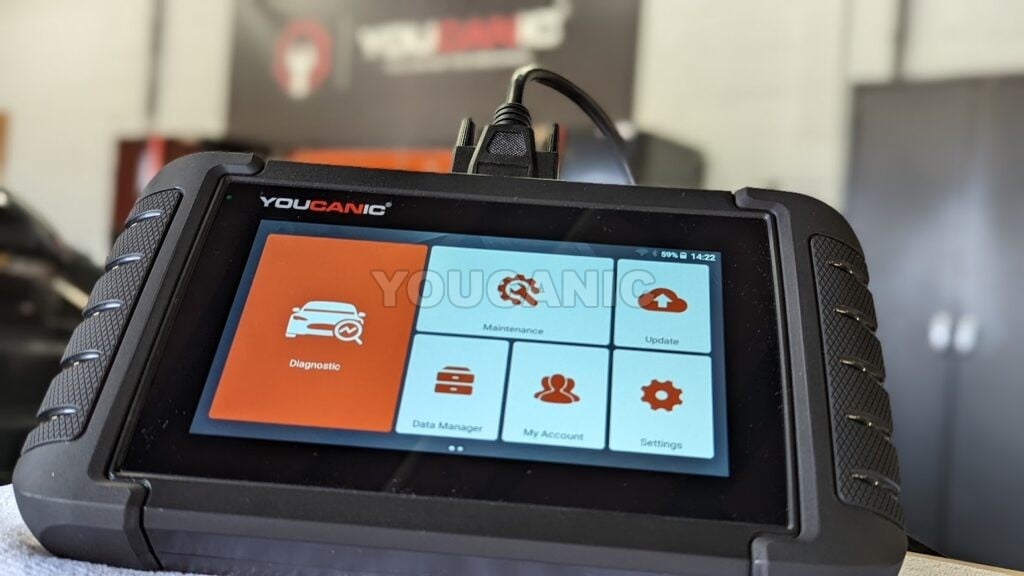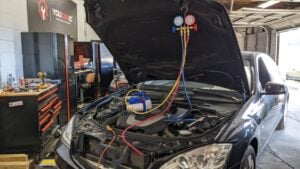Troubleshooting Lancia Check Engine Light
Is the check engine light illuminated on your Lancia? By following the procedures below, you will know the common problems with why the check engine light illuminates and learn the possible solutions for removing the warning light from your Lancia.
Video
Symptoms
- The engine runs rough or dies at idle.
- Engine vibrates
- Lack of power
- Poor throttle response
- Smoke from the exhaust
Diagnose Check Engine Light
You must first identify the fault code that triggered the ‘check engine light to fix the problem. A specific Diagnostic Trouble Code is stored in the memory whenever a check engine light goes on. However, access to these codes is possible using an OBD-II scanner.
These devices range from something simple as a Bluetooth OBD adapter that connects to an application on your smartphone over dedicated hand-held scan tools to powerful diagnostic tools.

The YOUCANIC Full System Scanner can read and clear codes through every control module of the vehicle. This scanner supports all vehicle makes and models.
These instructions work on 2000 and newer Lancia models, including:
- Flavia
- Lybra
- Musa
- Nuova Delta
- Phaedra
- Thema
- Thesis
- Voyager
- Ypsilon
Common Causes

- Loose gas cap: A loose, damaged, or missing gas cap can trigger the check engine light.
- Mass airflow sensor: The MAF sensor determines the mass flow rate of air entering a fuel-injected internal combustion engine. The air mass information is necessary for the engine control unit (ECU) to balance and deliver the correct fuel mass to the engine.
- Oxygen Sensor: O2 sensor is mounted in the exhaust manifold to monitor how much-unburned oxygen is in the exhaust as the exhaust exits the engine.
- Timing Chain: Most newer gasoline engines have Variable Valve Timing, which is extremely sensitive to timing issues. If the ‘check engine light is accompanied by a lack of power, rough idle, and stalling, timing should be first on the list to check. The problem is usually with a chain tensioner, which is not long enough to compensate for slack in the timing chain. As this can be a prelude to a much more dangerous timing failure, check this without delay.
- DTC: P0016
- Crankshaft Position Sensor: The crankshaft position sensor is quite a common failure point on many Lancia models. It will usually cause an intermittent misfire, engine cutting out, or not starting occasionally. In some cases, it can trigger various timing or alternator-related codes. Although very sporadic initially, symptoms will happen more frequently as time goes by.
- DTC: P0335
- Turbo Issues: Turbocharged engines can suffer from various boost-related issues. The usual causes are broken hoses, a dirty air filter, or a blocked intercooler. It is also possible for a turbocharger wastegate to be stuck open. Lastly, the boost sensor can be defective, giving false readings. You might experience a lack of power and acceleration accompanied by whining or hissing noises from the engine area, smoke from the exhaust, and high fuel consumption.
- DTC: P0235
- PWM Controllers: Unlike older cars with simple cooling fan regulation, newer ones use pulse width modulation (PWM) controllers. A module that controls the fan speed can get damaged by moisture and corrosion, resulting in dead cooling fans. Although this will not affect engine performance, it can still cause overheating.
- DTC: P0480
- Proportional Valve: Diesel engines have a common rail injection system, where an electronic proportional valve controls the fuel pressure. If it starts failing, you might experience a loss of power, hard starting when cold and black smoke from the exhaust. In addition to the regulator with an integrated sensor, check the wiring and connectors for damage.
- DTC: P0091
- Intake Swirl Flaps Another quite common and potentially very dangerous problem on JTD engines is intake swirl flaps. They control the intake geometry by opening and closing. With time, carbon buildup can obstruct the movement, sending the engine into ‘limp mode.’ More importantly, flaps can even break off and fly into the engine, causing catastrophic damage.
- DTC: P2009
Flashing check engine light
While various things can cause the solid check engine light, one flashing on and off is a clear and definite sign of engine misfire. Faulty sparks, broken coils, or leaking fuel injectors can cause thi. Whatever the cause, the misfire can quickly damage a catalytic converter and other engine components.
Try easing off the throttle, as this usually helps. If not, stop the car at the first possible spot. Never ignore a check engine light that is going on and off intermittently. An OBD-II scanner can help determine why the check engine light is flashing.
We hope you find the Troubleshooting Lancia Check Engine Light guide helpful. Check these troubleshooting and repair guides for more help on your Lancia.







